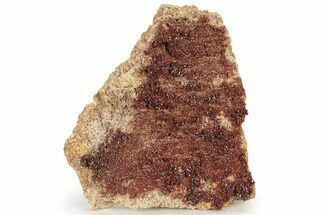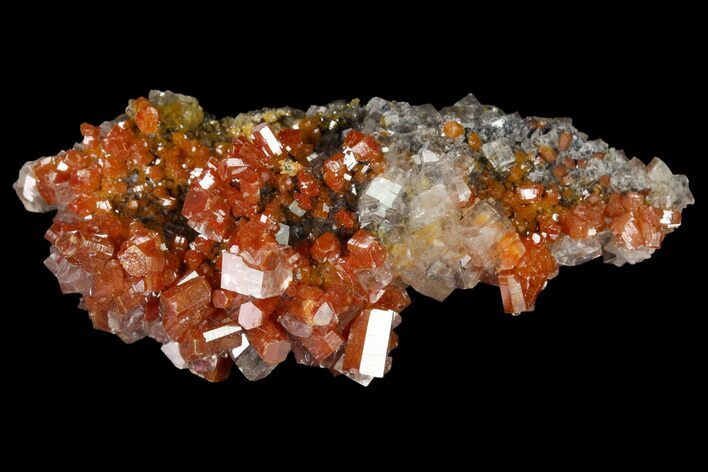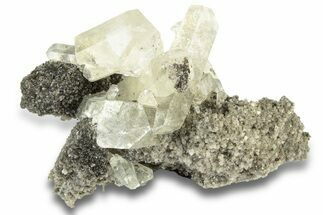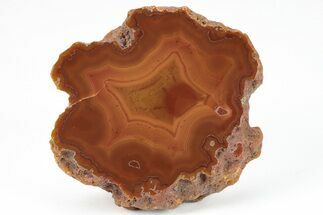This Specimen has been sold.
2.15" Vanadinite and Calcite Crystal Association - Apex Mine, Mexico
This is a gorgeous association of red-orange vanadinite crystals and rhombohedral calcite crystals. It was collected from the Apex mine in Chihuahua, Mexico.
About Vanadinite
Vanadinite is a mineral belonging to the apatite group of phosphates, with the chemical formula Pb5(VO4)3Cl. It is one of the main industrial ores of the metal vanadium and a minor source of lead. A dense, brittle mineral, it is usually found in the form of red hexagonal crystals.
Safety Warning: The lead and vanadium in the vanadinite can be harmful if absorbed into the blood stream by inhalation or ingestion. The crystals won't pose a health hazard just sitting on a shelf, but we recommend that you wash your hands after handling.
Vanadinite is a mineral belonging to the apatite group of phosphates, with the chemical formula Pb5(VO4)3Cl. It is one of the main industrial ores of the metal vanadium and a minor source of lead. A dense, brittle mineral, it is usually found in the form of red hexagonal crystals.
Safety Warning: The lead and vanadium in the vanadinite can be harmful if absorbed into the blood stream by inhalation or ingestion. The crystals won't pose a health hazard just sitting on a shelf, but we recommend that you wash your hands after handling.
About Calcite Crystals
Calcite crystals are a form of calcium carbonate (CaCO₃) known for their diverse shapes, transparency, and vibrant range of colors. They typically form in rhombohedral, scalenohedral, or prismatic shapes, often with well-defined, sharp edges and glossy surfaces. Calcite crystals are often translucent or transparent, sometimes displaying a double refraction effect where objects viewed through the crystal appear doubled. They can appear in various colors—white, clear, yellow, pink, blue, green, and orange—depending on impurities or trace minerals.
A notable characteristic of calcite is its reaction with weak acids like vinegar, which causes it to effervesce, or fizz, as it releases carbon dioxide. This property makes calcite crystals a key tool in geological identification and studies. Calcite forms in many environments, from sedimentary rocks like limestone and marble to hydrothermal veins.
Calcite crystals are a form of calcium carbonate (CaCO₃) known for their diverse shapes, transparency, and vibrant range of colors. They typically form in rhombohedral, scalenohedral, or prismatic shapes, often with well-defined, sharp edges and glossy surfaces. Calcite crystals are often translucent or transparent, sometimes displaying a double refraction effect where objects viewed through the crystal appear doubled. They can appear in various colors—white, clear, yellow, pink, blue, green, and orange—depending on impurities or trace minerals.
A notable characteristic of calcite is its reaction with weak acids like vinegar, which causes it to effervesce, or fizz, as it releases carbon dioxide. This property makes calcite crystals a key tool in geological identification and studies. Calcite forms in many environments, from sedimentary rocks like limestone and marble to hydrothermal veins.
SPECIES
Vanadinite & Calcite
LOCATION
Apex Mine, San Carlos, Chihuahua, Mexico
SIZE
2.15 x .95"
CATEGORY
ITEM
#165349
 Reviews
Reviews












